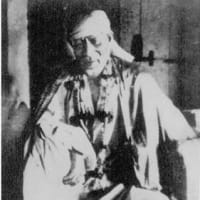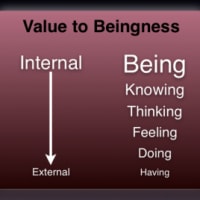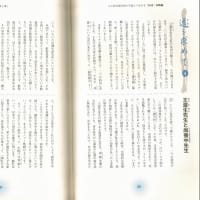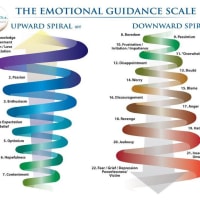page=29 - 罪の意識と恥の暴威を越えて
page=29
/>Focus again on that same fear, or on something else that you do not want to have happen, on something that you worry about, or on something that makes you nervous. Maybe you have a fear of public speaking. This could include the fear of making a mistake, or of seeming like a fool in front of a roomful of people.
“For years, I have suffered from a social phobia that crippled me. Being a full-time student, I come across new faces every day, and this caused me so much anxiety that I often felt like my heart would come out of my chest just from sitting in class! In the past ten years, I have gone through a dozen psychologists and medications, none of which helped even half as much as the Sedona Method. I would love to tell all others out there who suffer from extreme shyness or social anxieties, you are not alone! You can be free of the chains! The Method has given me my life back.”―M.H.,Allentown, PA
Whatever underlying fear you feel: Could you let go of wanting that to happen?
Check how you feel inside. Wasn’t it easy to let go in that way? This process will help you clear out the hidden recesses of your subconscious mind. After you release something that you’ve subconsciously wanted to happen, you’ll see a tremendous difference in your life in many areas, including how you feel. Have fun experimenting with this shortcut on your own.
Add this little trick to your toolbox of Sedona Method applications and enjoy the results. It’s great for those occasions when fearful thoughts arise in your consciousness, but you don’t have enough time to do an in-depth process. Whenever you become aware of yourself thinking about an unwanted outcome, simply let go of wanting it to happen by asking yourself the question: Could you let go of wanting that to happen?
Releasing Your Fear about Others
What kind of images do you hold in mind when you’re worrying about somebody you love? If you’re honest, you’ll probably admit that the pictures are not very positive ones. We also promote reverse intentions when we feel concerned on behalf of other people.
If you are worrying about someone, in addition to letting go of wanting that thing to happen to them, you can ask: Would you rather hold in mind _____ (what you worry might happen) or would you rather hold in mind _____ (the opposite)?
This is a no-brainer, don’t you agree? If your husband or wife, son, daughter, or best friend is a little late driving home from an evening appointment, would you rather hold in mind that they have slid off the road into a ditch, or would you rather hold in mind that they are merely running late? Like most of us, I’m sure you would rather experience a positive outcome. So, allow yourself to let go of expecting or wanting the opposite.
Jennifer: If Not Now, When?
Jennifer found the Method at age 58 after decades of searching for an answer to her anxiety and depression. She says, “I believe that anxiety is a habit. As a younger person, I learned anxiety and perfectionism from my mother. When I was 12 years old, I made a decision that has affected my life ever since. I did something that I thought would make my mother hate me and give me away. The only way I could see to make up for this heinous crime was to be the dutiful daughter the rest of my life.”
In her 20’s, Jennifer began experiencing heart palpitations and panic attacks. She went to therapy and began reading self-help books, but, as she says, “My whole history was mostly talking and telling my story. It was nice to have listeners, but there was no concrete message: ‘This is how you get better and get rid of this garbage.”’ At age 34, her husband died in an automobile accident, leaving her to raise their eight-year-old son on her own. She was still grieving when she remarried three years later. In the 1980’s, her gynecologist put her on Prozac, thinking the anxiety was related to hormonal problems, but she didn’t like it. Then she went on Xanax.
One day, Jennifer received a package in the mail with a promotional audio from Sedona Training Associates. As she says, “It spoke to my needs. I thought, ‘What the heck?’ and ordered the full program. I had spent so much money on counseling already that I was very skeptical. So I started and stopped releasing a few times. I had to release on the issue of releasing. But I commute, so it was easy to listen to the program in the car. Another idea kept me going: At 58, I could say to myself, ‘If not now, when? In 30 years, you’ll be 88, like your mother. What are you going to do for the next 30 years?’
“Releasing wasn’t an instant resolution of my anxiety, yet I noticed very quickly that I was feeling better. And I would do anything not to have to take pills again. All I know is that this is a tremendous program. I fired my last therapist on July Fourth, which is both Independence Day and my birthday.”
Today, when Jennifer starts feeling anxious, she may for an instant think, “Oh my God, I need an antidepressant.” She worries that her emotions may spiral out of control. Then, she reminds herself, “It’s just a feeling I’m having.” The Sedona Method has helped her to face her anxiety and understand what it is. “The Method is a wonderful tool,” she says. “I no longer feel as though I’m in a void, and I don’t dwell on my anxiety. The anxiety was a ball and chain I was carrying around that’s gone. Now I’m discovering who I am and learning to accept myself without it.”
Putting Your Fears Behind You
Like other problems, your fears are merely patterns ingrained in your consciousness. Another effective way to let go of fears, therefore, is to refer to them as memories by phrasing your releasing questions in the past tense. Please be mindful: the past can be as recent as an instant ago.
Begin by allowing yourself to remember a fear that you used to have.
Then, ask yourself: Could you allow yourself to remember how you used to be afraid of _____?
Would you like to change that from the past?
If the answer is “yes,” ask: Could you let go of wanting to change that from the past?
Then let go as best you can.
Simply move on to the next step if the answer is “no.”
The completion question in this series is: Could you let go of wanting to be afraid of _____?
As always, do your best to let go. If you find that you’re still clinging to the memory of the fear in the present moment, however, keep going back and repeating the steps from the beginning until you can let go fully. This can be a powerful release.
Bob: Turning the Corner on Chronic Anxiety
At Sedona Training Associates, we regularly receive excited letters from course graduates thrilled to have broken free of their unwanted patterns of feeling, thought, and belief. Bob mailed us two such letters. Here is an excerpt from the first:
“The Sedona Method freed me from over 40 years of psychological pain that was the result of a severe case of anxiety disorder. Approximately 18 months after I began using the audio program, my paralyzing fears were nearly extinguished! I did not believe this was possible. I am so grateful for the Sedona Method and the wonderful life I am now able to enjoy.”
As a result of his initial breakthrough, Bob then decided to attend a Seven-day Retreat in Sedona, Arizona, in early October, and returned home with a renewed commitment to listen to the audio programs. A few weeks later, he sent a second letter:
“I am so happy and pleased to let you know that I became totally free of my anxiety disorder at the end of October. This is all I ever hoped for when I received the first of the tapes I ordered two years ago. Anything beyond this would be something I was not cognizant of, and therefore was not seeking.
“I initially made dramatic progress, and over time continued to improve through the Sedona Method. Of late, I intensified my releasing and listening to the tapes recorded by Lester Levenson. Somehow, I felt that I was on the brink of breaking completely free. Then on Sunday, October 13, I woke up with a certain sense of calm about me. The feeling was surreal. All of a sudden, it dawned on me that this must be what Lester meant when he indicated that one must “quiet the mind.” Over the next three days, I experienced incidents that would normally trigger small traces of anxiety. These would still pop up when I was not prepared for them. Now, to my surprise, the compulsive behavior was not only gone, but was replaced by feelings of confidence. By October 16, my visceral response to anxiety-causing stimuli was to expect not to have feelings of anxiety. This was significant, and I think it marked the final turning point for me in ridding myself of a problem that had plagued me practically all of my life.
“Although I have not reached what to most of us seems like the mystical perspective on the universe that Lester spoke of, I am able to identify with key elements of what he described as being free. I can feel the distinction and separation of my body from my consciousness and my thinking. My body has been de-emphasized in importance to me. It is as though I am subtly looking at things through a different prism that forgets to think about the body. I am also experiencing what Lester described as the absence of ego. This is the most pleasurable aspect of becoming free.
“Today, I feel a complete lack of fear and anxiety in all situations. It is as though the feelings lodged in the subconscious mind that caused the anxiety have been completely cleaned out. Fear and anxiety are no longer impediments to me. This was my problem and what I had been trying to rid myself of all these years.”
Two More Quick Tips
The processes in this chapter will really help you to cut through all your fears. An idea for accelerating your freedom from anxiety is to make a list of things that you used to be afraid of, and then let go of wanting them to happen one by one.
In addition, as you go about your day, if you happen to catch yourself getting jittery about something or dreading an outcome, check to see what it is that you’re actually afraid will happen. Then ask: Could you let go of wanting it to happen?
Chapter 14 - Beyond the Tyranny of Guilt and Shame
第14章-罪の意識と恥の暴威を越えて
Guilt and shame are tricky feelings that cause so much unnecessary suffering. Nearly identical in the way they work within us, guilt and shame generally form a single complex. But while it is possible to feel guilt without shame, we cannot feel shame without guilt. The way to distinguish them is this: Guilt is the feeling that follows a perceived wrongdoing: “I did wrong.” Shame is the feeling that we, ourselves, are made “wrong” or “bad” for what we perceive we did. On the chart of the nine emotional states (see page 106), guilt floats between several categories. It relates to the energy of every emotion from apathy through pride. Shame, on the other hand, is a grief-related feeling.
罪の意識と恥は、それだけの不必要な苦しみを引き起こす手際のいる感情です。
彼らが我々の範囲内で働く方法でほとんど同一で、罪の意識と恥は、一つの複合体を一般に形成します。
しかし、恥なしで罪の意識を感じることができる間、我々は罪の意識なしで恥を感じることができません。
彼らを識別する方法は、これです:
罪の意識は、認められた不正に続く感覚です:
「私は、誤りをしました。」、恥は、我々(自分自身)が「間違っている」かしたと認めることにとって「良くなく」なるという感覚です。
9つの感情的な国(106ページを見ます)のチャートに関して、罪の意識はいくつかのカテゴリーの間で浮きます。
それは無関心から誇りまであらゆる感情のエネルギーに関するものです。恥は、他方、悲しみ関連の感覚です。
This chapter will explore and debunk the common misunderstandings about guilt and shame―the insidious robbers of our happiness, freedom, and peace of mind. Then, it will provide a few simple strategies for releasing these self-sabotaging feelings. Since they are for most purposes interchangeable, I’ll be referring to guilt and shame collectively throughout the remainder of this chapter either as “guilt” or “guilt/shame.”
この章は、罪の意識と恥の一般の誤解を調査して、偽りを暴きます ― 心の我々の幸せ、自由と平和の潜行性の強盗。
それから、それは2、3の単純な戦略をこれらの自身を破壊している感情をリリースするために提供します。
彼らが交換可能な大部分の目的に賛成であるので、私は「罪の意識」または「罪の意識/恥」としてこの章の残りを通して全体的に罪の意識と恥に言及しています。
Lies Perpetuated in the Name of Guilt and Shame
罪の意識と恥の名において恒久化されるうそ
There are three major myths about guilt/shame that often severely limit our lives and make us miserable. The first and biggest lie is that guilt can protect us from being punished. In fact, guilt is an unconscious “I owe you” for punishment. That’s right. When we feel guilty, we attract punishment from the world, and we also create it for ourselves. And here’s the kicker: We never feel as though we’ve been sufficiently punished.
しばしばひどく我々の命を制限して、我々を惨めにする罪の意識/恥について、3つの大きな神話があります。
最初と最大のうそは、罪の意識が我々をやっつけられることから保護することができるということです。
実際、罪の意識はあります意識不明の、罰のために「私は、あなたに義務があります」。
その通り。
気がとがめるとき、我々は世界から罰を引きつけます、そして、我々も自分自身でそれをつくります。
そして、キッカーはここにいます:
まるで十分に罰されたように、我々は決して感じません。
How does self-punishment arise? First we do something, or think of doing something, that we believe we shouldn’t do, or that is wrong to do. Interestingly, we often feel guilty even when we haven’t followed through with an external action. Then, whether or not we’ll “get away with it” in the eyes of the world, we remain aware of what we did or thought, and we won’t easily let ourselves off the hook. Because we believe that punishment from the outside is inevitable, we punish ourselves in the false hope that this will enable us to prevent receiving it. But since we have no idea of what others’, or even our own, sense of inner governance will determine is an appropriate degree of punishment, we invariably overdo it.
どのように、自己懲罰は起こりますか?
1番目に、我々は何かするか、何かすることについて考えます、我々はしてはならないと思っていて、または、するのは間違っている。興味深いことには、外部措置を続行しなかったときでも、我々はしばしば気がとがめます。
それから、世界の目で「それをやってのける」か否かを問わず、我々は何をしたか、それを考えたか気づいているままです、そして、我々は自分自身を危機を脱したように簡単にしておきません。
外側からの罰が回避不能であると思っているので、我々はこれで我々はそれを受けるのを妨げることができるという空頼みで自分自身を罰します。
我々がなんと他のものまたは我々自身のものさえだろう全くわからない時から、内部の自治の感覚が決定することは罰の適切な程度です、我々は常にやりすぎです。
The first time I remember inflicting guilt-motivated punishment of this kind on myself was in preschool after I got angry with a fellow student and pushed him so hard that he slipped, fell, and broke a glass. I felt so bad about having hurt him, and so afraid of what my teacher and parents might do to punish me, that I picked up a piece of the glass and cut myself, inwardly hoping that the action would protect me from any impending repercussions. Of course it didn’t work. I still got reprimanded and received a punishment. It was so insignificant, however, that I can’t even recall what happened, except that I did get punished and also had a cut on my hand for good measure.
私がこの種類の罪の意識に動機づけされた罰を自分自身に課したのを憶えているという最初は、私が学友に怒ったあと幼稚園にあって、彼を彼がすべったように堅く押して、落ちて、ガラスを割りました。
彼を傷つけたことがとても残念で、先生と両親が私を罰するためにするかもしれないという、ガラスの部分を拾って、怪我をしたというでがとても怖いと、私は感じました。そして、行動が私をどんな切迫した影響からでも保護することを内心望みました。
もちろん、それは働きませんでした。
私は、まだ非難されて、罰を受けました。
しかし、私が何があったかについて、思い出すことさえできないことがとても取るに足らなかったですが、私は罰されて、そのうえその上手に切り傷がありました。
Pause for a moment to consider anything you feel guilty about doing or not doing, saying or not saying, or even thinking or feeling. Make a point of noticing whether you have been punishing yourself and living in fear of an impending external punishment.
あなたがするか、しないで、言うか、言わないか、考えるさえか、感じて気がとがめる何でも考慮するために、しばらく休止してください。
わざわざあなたが自分自身を罰していて、切迫した外部の罰を恐れて生きていたかどうかについて気がつくことをしてください。
When you think about the things that you’ve been feeling guilty about, also check to see if your guilt has actually protected you from being punished, as the feeling “promised” you it would. Like the lies that most feelings tell us, you’ll usually find that your guilt produced the opposite effect. It caused you to punish yourself. And, if your actions involved others, most likely it didn’t prevent you from receiving their punishment. After all, if feeling guilty truly prevented external punishment, wouldn’ t our prisons be a lot emptier?
気がとがめていたものについてあなたが考えるとき、また、感覚がそれがそうするとあなたに「約束した」ので、あなたの罪の意識があなたをやっつけられることから実際に保護したかどうか見るためにチェックしてください。
大部分の感情が我々に話すうそのように、あなたは、罪の意識が逆の影響を生じたと通常わかります。
それは、あなたに自分自身を罰させました。
そして、あなたの行動が他を含むならば、たぶん、それはあなたが彼らの罰を受けるのを防がなかったでしょう。
結局、本当に気がとがめることが外部の罰を防ぐならば、我々の刑務所は、もっとより空でありませんか?
“The Sedona Method works on a feeling level and allows people to eliminate both their negative emotions and thoughts. It is fast and effective, because it goes directly to the heart of the problem. It is a shortcut for anyone who uses it.”―Dr. Elliott Grumer, Phoenix, AZ
A seco
page=29
/>Focus again on that same fear, or on something else that you do not want to have happen, on something that you worry about, or on something that makes you nervous. Maybe you have a fear of public speaking. This could include the fear of making a mistake, or of seeming like a fool in front of a roomful of people.
“For years, I have suffered from a social phobia that crippled me. Being a full-time student, I come across new faces every day, and this caused me so much anxiety that I often felt like my heart would come out of my chest just from sitting in class! In the past ten years, I have gone through a dozen psychologists and medications, none of which helped even half as much as the Sedona Method. I would love to tell all others out there who suffer from extreme shyness or social anxieties, you are not alone! You can be free of the chains! The Method has given me my life back.”―M.H.,Allentown, PA
Whatever underlying fear you feel: Could you let go of wanting that to happen?
Check how you feel inside. Wasn’t it easy to let go in that way? This process will help you clear out the hidden recesses of your subconscious mind. After you release something that you’ve subconsciously wanted to happen, you’ll see a tremendous difference in your life in many areas, including how you feel. Have fun experimenting with this shortcut on your own.
Add this little trick to your toolbox of Sedona Method applications and enjoy the results. It’s great for those occasions when fearful thoughts arise in your consciousness, but you don’t have enough time to do an in-depth process. Whenever you become aware of yourself thinking about an unwanted outcome, simply let go of wanting it to happen by asking yourself the question: Could you let go of wanting that to happen?
Releasing Your Fear about Others
What kind of images do you hold in mind when you’re worrying about somebody you love? If you’re honest, you’ll probably admit that the pictures are not very positive ones. We also promote reverse intentions when we feel concerned on behalf of other people.
If you are worrying about someone, in addition to letting go of wanting that thing to happen to them, you can ask: Would you rather hold in mind _____ (what you worry might happen) or would you rather hold in mind _____ (the opposite)?
This is a no-brainer, don’t you agree? If your husband or wife, son, daughter, or best friend is a little late driving home from an evening appointment, would you rather hold in mind that they have slid off the road into a ditch, or would you rather hold in mind that they are merely running late? Like most of us, I’m sure you would rather experience a positive outcome. So, allow yourself to let go of expecting or wanting the opposite.
Jennifer: If Not Now, When?
Jennifer found the Method at age 58 after decades of searching for an answer to her anxiety and depression. She says, “I believe that anxiety is a habit. As a younger person, I learned anxiety and perfectionism from my mother. When I was 12 years old, I made a decision that has affected my life ever since. I did something that I thought would make my mother hate me and give me away. The only way I could see to make up for this heinous crime was to be the dutiful daughter the rest of my life.”
In her 20’s, Jennifer began experiencing heart palpitations and panic attacks. She went to therapy and began reading self-help books, but, as she says, “My whole history was mostly talking and telling my story. It was nice to have listeners, but there was no concrete message: ‘This is how you get better and get rid of this garbage.”’ At age 34, her husband died in an automobile accident, leaving her to raise their eight-year-old son on her own. She was still grieving when she remarried three years later. In the 1980’s, her gynecologist put her on Prozac, thinking the anxiety was related to hormonal problems, but she didn’t like it. Then she went on Xanax.
One day, Jennifer received a package in the mail with a promotional audio from Sedona Training Associates. As she says, “It spoke to my needs. I thought, ‘What the heck?’ and ordered the full program. I had spent so much money on counseling already that I was very skeptical. So I started and stopped releasing a few times. I had to release on the issue of releasing. But I commute, so it was easy to listen to the program in the car. Another idea kept me going: At 58, I could say to myself, ‘If not now, when? In 30 years, you’ll be 88, like your mother. What are you going to do for the next 30 years?’
“Releasing wasn’t an instant resolution of my anxiety, yet I noticed very quickly that I was feeling better. And I would do anything not to have to take pills again. All I know is that this is a tremendous program. I fired my last therapist on July Fourth, which is both Independence Day and my birthday.”
Today, when Jennifer starts feeling anxious, she may for an instant think, “Oh my God, I need an antidepressant.” She worries that her emotions may spiral out of control. Then, she reminds herself, “It’s just a feeling I’m having.” The Sedona Method has helped her to face her anxiety and understand what it is. “The Method is a wonderful tool,” she says. “I no longer feel as though I’m in a void, and I don’t dwell on my anxiety. The anxiety was a ball and chain I was carrying around that’s gone. Now I’m discovering who I am and learning to accept myself without it.”
Putting Your Fears Behind You
Like other problems, your fears are merely patterns ingrained in your consciousness. Another effective way to let go of fears, therefore, is to refer to them as memories by phrasing your releasing questions in the past tense. Please be mindful: the past can be as recent as an instant ago.
Begin by allowing yourself to remember a fear that you used to have.
Then, ask yourself: Could you allow yourself to remember how you used to be afraid of _____?
Would you like to change that from the past?
If the answer is “yes,” ask: Could you let go of wanting to change that from the past?
Then let go as best you can.
Simply move on to the next step if the answer is “no.”
The completion question in this series is: Could you let go of wanting to be afraid of _____?
As always, do your best to let go. If you find that you’re still clinging to the memory of the fear in the present moment, however, keep going back and repeating the steps from the beginning until you can let go fully. This can be a powerful release.
Bob: Turning the Corner on Chronic Anxiety
At Sedona Training Associates, we regularly receive excited letters from course graduates thrilled to have broken free of their unwanted patterns of feeling, thought, and belief. Bob mailed us two such letters. Here is an excerpt from the first:
“The Sedona Method freed me from over 40 years of psychological pain that was the result of a severe case of anxiety disorder. Approximately 18 months after I began using the audio program, my paralyzing fears were nearly extinguished! I did not believe this was possible. I am so grateful for the Sedona Method and the wonderful life I am now able to enjoy.”
As a result of his initial breakthrough, Bob then decided to attend a Seven-day Retreat in Sedona, Arizona, in early October, and returned home with a renewed commitment to listen to the audio programs. A few weeks later, he sent a second letter:
“I am so happy and pleased to let you know that I became totally free of my anxiety disorder at the end of October. This is all I ever hoped for when I received the first of the tapes I ordered two years ago. Anything beyond this would be something I was not cognizant of, and therefore was not seeking.
“I initially made dramatic progress, and over time continued to improve through the Sedona Method. Of late, I intensified my releasing and listening to the tapes recorded by Lester Levenson. Somehow, I felt that I was on the brink of breaking completely free. Then on Sunday, October 13, I woke up with a certain sense of calm about me. The feeling was surreal. All of a sudden, it dawned on me that this must be what Lester meant when he indicated that one must “quiet the mind.” Over the next three days, I experienced incidents that would normally trigger small traces of anxiety. These would still pop up when I was not prepared for them. Now, to my surprise, the compulsive behavior was not only gone, but was replaced by feelings of confidence. By October 16, my visceral response to anxiety-causing stimuli was to expect not to have feelings of anxiety. This was significant, and I think it marked the final turning point for me in ridding myself of a problem that had plagued me practically all of my life.
“Although I have not reached what to most of us seems like the mystical perspective on the universe that Lester spoke of, I am able to identify with key elements of what he described as being free. I can feel the distinction and separation of my body from my consciousness and my thinking. My body has been de-emphasized in importance to me. It is as though I am subtly looking at things through a different prism that forgets to think about the body. I am also experiencing what Lester described as the absence of ego. This is the most pleasurable aspect of becoming free.
“Today, I feel a complete lack of fear and anxiety in all situations. It is as though the feelings lodged in the subconscious mind that caused the anxiety have been completely cleaned out. Fear and anxiety are no longer impediments to me. This was my problem and what I had been trying to rid myself of all these years.”
Two More Quick Tips
The processes in this chapter will really help you to cut through all your fears. An idea for accelerating your freedom from anxiety is to make a list of things that you used to be afraid of, and then let go of wanting them to happen one by one.
In addition, as you go about your day, if you happen to catch yourself getting jittery about something or dreading an outcome, check to see what it is that you’re actually afraid will happen. Then ask: Could you let go of wanting it to happen?
Chapter 14 - Beyond the Tyranny of Guilt and Shame
第14章-罪の意識と恥の暴威を越えて
Guilt and shame are tricky feelings that cause so much unnecessary suffering. Nearly identical in the way they work within us, guilt and shame generally form a single complex. But while it is possible to feel guilt without shame, we cannot feel shame without guilt. The way to distinguish them is this: Guilt is the feeling that follows a perceived wrongdoing: “I did wrong.” Shame is the feeling that we, ourselves, are made “wrong” or “bad” for what we perceive we did. On the chart of the nine emotional states (see page 106), guilt floats between several categories. It relates to the energy of every emotion from apathy through pride. Shame, on the other hand, is a grief-related feeling.
罪の意識と恥は、それだけの不必要な苦しみを引き起こす手際のいる感情です。
彼らが我々の範囲内で働く方法でほとんど同一で、罪の意識と恥は、一つの複合体を一般に形成します。
しかし、恥なしで罪の意識を感じることができる間、我々は罪の意識なしで恥を感じることができません。
彼らを識別する方法は、これです:
罪の意識は、認められた不正に続く感覚です:
「私は、誤りをしました。」、恥は、我々(自分自身)が「間違っている」かしたと認めることにとって「良くなく」なるという感覚です。
9つの感情的な国(106ページを見ます)のチャートに関して、罪の意識はいくつかのカテゴリーの間で浮きます。
それは無関心から誇りまであらゆる感情のエネルギーに関するものです。恥は、他方、悲しみ関連の感覚です。
This chapter will explore and debunk the common misunderstandings about guilt and shame―the insidious robbers of our happiness, freedom, and peace of mind. Then, it will provide a few simple strategies for releasing these self-sabotaging feelings. Since they are for most purposes interchangeable, I’ll be referring to guilt and shame collectively throughout the remainder of this chapter either as “guilt” or “guilt/shame.”
この章は、罪の意識と恥の一般の誤解を調査して、偽りを暴きます ― 心の我々の幸せ、自由と平和の潜行性の強盗。
それから、それは2、3の単純な戦略をこれらの自身を破壊している感情をリリースするために提供します。
彼らが交換可能な大部分の目的に賛成であるので、私は「罪の意識」または「罪の意識/恥」としてこの章の残りを通して全体的に罪の意識と恥に言及しています。
Lies Perpetuated in the Name of Guilt and Shame
罪の意識と恥の名において恒久化されるうそ
There are three major myths about guilt/shame that often severely limit our lives and make us miserable. The first and biggest lie is that guilt can protect us from being punished. In fact, guilt is an unconscious “I owe you” for punishment. That’s right. When we feel guilty, we attract punishment from the world, and we also create it for ourselves. And here’s the kicker: We never feel as though we’ve been sufficiently punished.
しばしばひどく我々の命を制限して、我々を惨めにする罪の意識/恥について、3つの大きな神話があります。
最初と最大のうそは、罪の意識が我々をやっつけられることから保護することができるということです。
実際、罪の意識はあります意識不明の、罰のために「私は、あなたに義務があります」。
その通り。
気がとがめるとき、我々は世界から罰を引きつけます、そして、我々も自分自身でそれをつくります。
そして、キッカーはここにいます:
まるで十分に罰されたように、我々は決して感じません。
How does self-punishment arise? First we do something, or think of doing something, that we believe we shouldn’t do, or that is wrong to do. Interestingly, we often feel guilty even when we haven’t followed through with an external action. Then, whether or not we’ll “get away with it” in the eyes of the world, we remain aware of what we did or thought, and we won’t easily let ourselves off the hook. Because we believe that punishment from the outside is inevitable, we punish ourselves in the false hope that this will enable us to prevent receiving it. But since we have no idea of what others’, or even our own, sense of inner governance will determine is an appropriate degree of punishment, we invariably overdo it.
どのように、自己懲罰は起こりますか?
1番目に、我々は何かするか、何かすることについて考えます、我々はしてはならないと思っていて、または、するのは間違っている。興味深いことには、外部措置を続行しなかったときでも、我々はしばしば気がとがめます。
それから、世界の目で「それをやってのける」か否かを問わず、我々は何をしたか、それを考えたか気づいているままです、そして、我々は自分自身を危機を脱したように簡単にしておきません。
外側からの罰が回避不能であると思っているので、我々はこれで我々はそれを受けるのを妨げることができるという空頼みで自分自身を罰します。
我々がなんと他のものまたは我々自身のものさえだろう全くわからない時から、内部の自治の感覚が決定することは罰の適切な程度です、我々は常にやりすぎです。
The first time I remember inflicting guilt-motivated punishment of this kind on myself was in preschool after I got angry with a fellow student and pushed him so hard that he slipped, fell, and broke a glass. I felt so bad about having hurt him, and so afraid of what my teacher and parents might do to punish me, that I picked up a piece of the glass and cut myself, inwardly hoping that the action would protect me from any impending repercussions. Of course it didn’t work. I still got reprimanded and received a punishment. It was so insignificant, however, that I can’t even recall what happened, except that I did get punished and also had a cut on my hand for good measure.
私がこの種類の罪の意識に動機づけされた罰を自分自身に課したのを憶えているという最初は、私が学友に怒ったあと幼稚園にあって、彼を彼がすべったように堅く押して、落ちて、ガラスを割りました。
彼を傷つけたことがとても残念で、先生と両親が私を罰するためにするかもしれないという、ガラスの部分を拾って、怪我をしたというでがとても怖いと、私は感じました。そして、行動が私をどんな切迫した影響からでも保護することを内心望みました。
もちろん、それは働きませんでした。
私は、まだ非難されて、罰を受けました。
しかし、私が何があったかについて、思い出すことさえできないことがとても取るに足らなかったですが、私は罰されて、そのうえその上手に切り傷がありました。
Pause for a moment to consider anything you feel guilty about doing or not doing, saying or not saying, or even thinking or feeling. Make a point of noticing whether you have been punishing yourself and living in fear of an impending external punishment.
あなたがするか、しないで、言うか、言わないか、考えるさえか、感じて気がとがめる何でも考慮するために、しばらく休止してください。
わざわざあなたが自分自身を罰していて、切迫した外部の罰を恐れて生きていたかどうかについて気がつくことをしてください。
When you think about the things that you’ve been feeling guilty about, also check to see if your guilt has actually protected you from being punished, as the feeling “promised” you it would. Like the lies that most feelings tell us, you’ll usually find that your guilt produced the opposite effect. It caused you to punish yourself. And, if your actions involved others, most likely it didn’t prevent you from receiving their punishment. After all, if feeling guilty truly prevented external punishment, wouldn’ t our prisons be a lot emptier?
気がとがめていたものについてあなたが考えるとき、また、感覚がそれがそうするとあなたに「約束した」ので、あなたの罪の意識があなたをやっつけられることから実際に保護したかどうか見るためにチェックしてください。
大部分の感情が我々に話すうそのように、あなたは、罪の意識が逆の影響を生じたと通常わかります。
それは、あなたに自分自身を罰させました。
そして、あなたの行動が他を含むならば、たぶん、それはあなたが彼らの罰を受けるのを防がなかったでしょう。
結局、本当に気がとがめることが外部の罰を防ぐならば、我々の刑務所は、もっとより空でありませんか?
“The Sedona Method works on a feeling level and allows people to eliminate both their negative emotions and thoughts. It is fast and effective, because it goes directly to the heart of the problem. It is a shortcut for anyone who uses it.”―Dr. Elliott Grumer, Phoenix, AZ
A seco






















